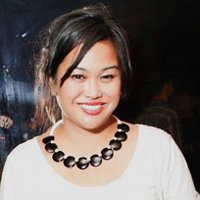If there ever was a nightclub that captured the zeitgeist of ‘80s New York, Area was it. Eric Goode, who founded the raucous downtown hot spot in 1983—along with three guys from California, paid a mere $3,000 a month for the 20,000-square-foot space that attracted an eclectic mix of artists, A-listers, celebrities, scenesters, and more, ranging from Malcolm McLaren to Grace Jones, and John F. Kennedy Jr. to Andy Warhol. Those lucky enough to get past the velvet rope were in for a wild time. Every six weeks, the storied nightclub would be completely transformed into an entirely new universe with themes like Natural History, Fellini, and Gardens that involved naked performers, lively antics, and elaborate works of art. Unfortunately, Area faded as fast as it ascended, shutting down just four years after it opened because it couldn’t make enough profit to stay in business.

“It wasn’t about the money,” said Goode, who is now the hotelier and restaurateur responsible for New York’s Bowery Hotel and The Maritime Hotel. “The culture of New York was different. It was lawless, you could drink at 18, you could smoke. We could do pretty much anything we wanted with reckless abandon.”
“He made a lot of fun,” added art dealer Tony Shafrazi. “I had a lot of fun.”

To celebrate Area’s 30th anniversary, Abrams published an illustrated memoir, Area: 1983-1987, and New York gallery The Hole is holding an exhibition, complete with a re-creation of the nightclub, through November 10 to display the art and ephemera of Area’s time. For art dealer and former director of the Museum of Contemporary Art, Los Angeles Jeffrey Deitch—who worked on the project with Goode, his sister Jennifer Goode, former Area creative director and restaurateur Serge Becker, and writer Glenn O’Brien—it was also the first show he has curated since his return to the city this year.
The exhibition, which opened on November 5, serves as a reunion of sorts for former Area club-goers, who include Julian Schnabel, Goode, Shafrazi, artist Chuck Close, and photographer Roxanne Lowit. A recreation of a New York City bodega greets visitors before they stumble upon a Money Making Manhattan box, where guests can experience a tornado of fake and real money flying around. From there, a Barbara Kruger mural lining the left wall reads “When you hear the word culture take out your checkbook,” while on the right stands a fake unisex bathroom that evokes the one that stood in Area. Next is a room filled with Polaroids by Maripol, photographs starring the likes of New York mayor Ed Koch, artist Jean-Michel Basquiat, and more, as well as the nightclub's promotional posters and flyers. A window in the floor peers down on a semi-nude performer lying on a bed. And, of course, no Area re-creation is complete without a silver-walled dance floor, finished with flashing lights.

Area was not only an artist’s playground; it served as their blank canvas. Endless installations by then-burgeoning artists whose works now sell for millions, rotated in and out. David Hockney, the British artist famous for his paintings of Southern California swimming pools, conceived of an actual one for the nightclub. Warhol proudly stood beside the Invisible Sculpture he conceptualized for the Art party. Keith Haring painted a mural. Several artists who showed up for the exhibition’s opening recalled pieces they made for Area.
“My piece which is over above the urinal, I did for the unisex bathrooms,” said Close about the large-scale photograph of a man’s penis that hung in the gallery.
“I put my bed in the center and all my art,” said artist Colette Lumiere, one of the originators of nightclub art. “It was a big celebration for my show at Daniel Newburg.”

Those who were part of the original Area scene remember a boisterous party. “It’s like a footnote,” said Close of the exhibition. “It does have a lot of the spirit, a lot of the people.”
“When you were going through it you didn’t realize how important it would become and how wonderful it really was, until you don’t have it anymore,” reminisced Lowit, who joked, “Did we have any of the money to buy any of the cheap works? No. We’d be millionaires by now if we did.”
And how has the New York art world changed in the last 30 years? “One thing, it’s bigger, but the spirit is similar,” said Deitch. “People want this convergence of music and performance and fashion.”






